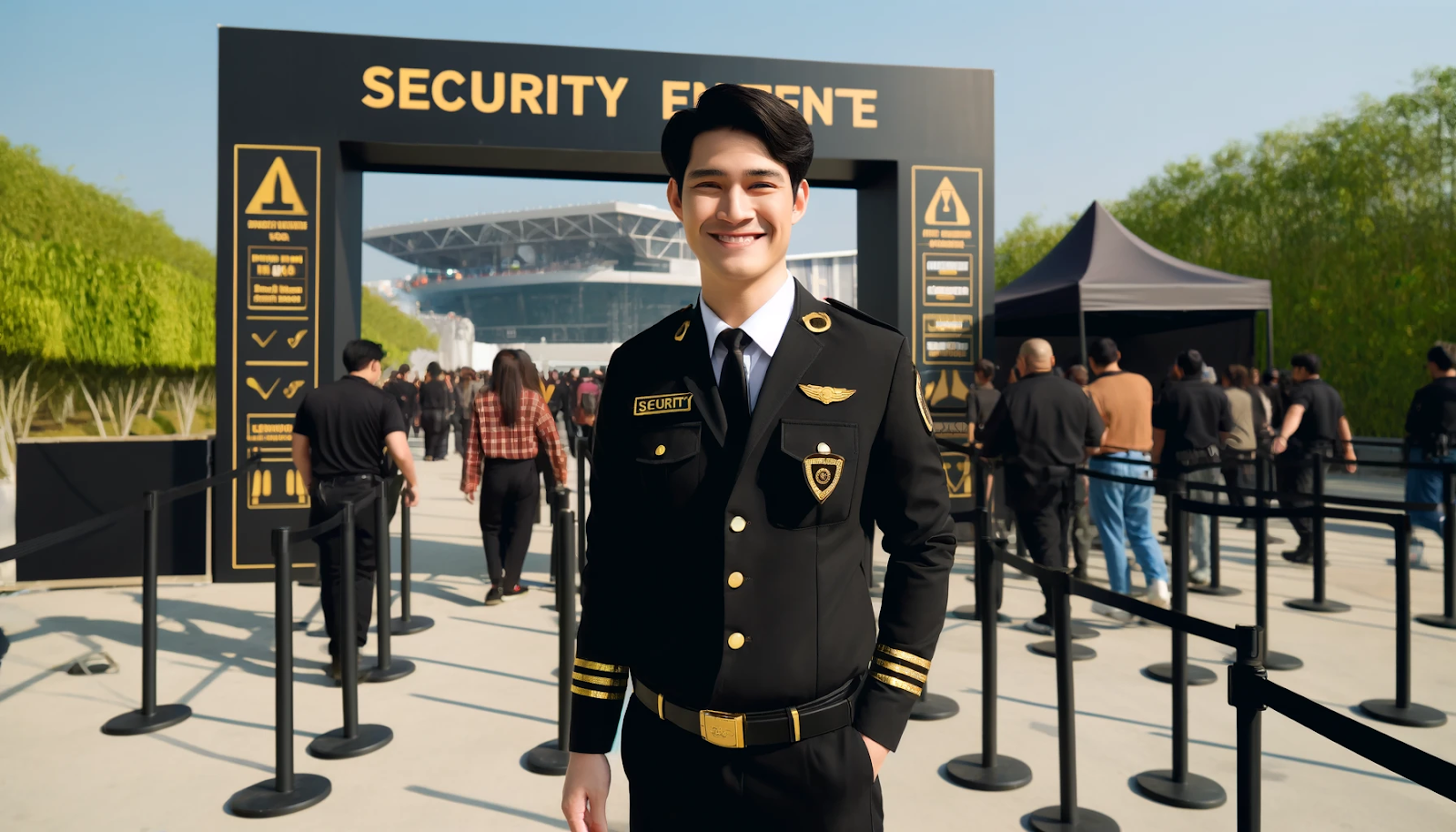Clear and effective communication of security protocols is crucial for any event. Property managers, chief security officers, and security company hiring managers play a pivotal role in developing and executing a plan that ensures a safe, enjoyable experience for all. Here are detailed strategies and tips for communicating security measures and expectations to event attendees.
Pre-Event Communication
- Email Campaigns:
Email campaigns allow for establishing early communication and setting expectations before the event. A well-timed series of emails can help guide attendees through the process. Here’s an effective email strategy:
- First Email (3 Weeks Before):
Send a general overview of the event, including a “Save the Date,” basic security measures like prohibited items, and a summary of what to expect. - Second Email (1 Week Before):
Share detailed information about the security process, including guidelines on prohibited items, specific check-in procedures, and contact information for emergency support. - Final Email (24 Hours Before):
Send a last-minute reminder outlining important security protocols, parking guidelines, and any changes made since the previous emails.
- Website Information:
A comprehensive and dedicated security page on the event's official website is crucial. It serves as a go-to resource for all security-related questions. Here’s what to include on this page:
- Prohibited Items: Provide a list of items that cannot be brought to the event, such as weapons, outside food and beverages, and oversized bags.
- Bag Policy: Outline bag size restrictions and how to handle the check-in process.
- Checkpoints: Provide a map or description of security checkpoints' locations.
- Emergency Contacts: List emergency contacts and first aid stations.
- Social Media Updates:
Social media is one of the most powerful tools for reaching a large audience quickly. Create short posts or infographics highlighting security measures. Here are some tips for effective social media communication:
- Event Hashtag: Use the event's official hashtag to increase reach and encourage attendee sharing.
- Visual Content: Make the posts visually appealing with infographics or short video clips to ensure engagement.
- Timing: Share updates leading up to and during the event for maximum visibility.
- Mobile Alerts and Apps:
Many events now offer mobile apps with built-in push notification systems. Here’s how to leverage them:
- Targeted Notifications: Send specific messages to different attendee groups, such as VIPs or volunteers, about security rules tailored to their access.
- Real-Time Updates: Notify guests of urgent or unexpected changes, such as increased security wait times.
On-Site Communication
- Visible Signage:
Signage is one of the first things attendees notice when entering the venue. Here’s how to create effective signs:
- Clear Messaging: Use concise language and universally recognizable symbols.
- Strategic Placement: Place signs at all major entry points and high-traffic areas to reinforce rules and direct attendees to different security checkpoints.
- Staff Presence:
A strong on-site security staff presence is vital for event success. Ensure that staff and volunteers are:
- Trained Uniformly: Provide staff with consistent messaging so that answers are reliable and informative.
- Accessible: Have staff stationed throughout high-traffic areas to answer questions and guide attendees through security.
- Announcements and Instructions:
Use audio announcements and digital displays to keep attendees informed:
- Periodic Announcements: Announce security measures, queue times, and protocol updates over the public address system.
- Digital Screens: Use high-traffic zones like lobbies or concourses to display important security measures on digital screens.
Post-Event Communication
- Surveys and Feedback:
Post-event feedback is crucial for improvement:
- Surveys: Send out a digital survey shortly after the event to gather insights into the attendees experience with security measures.
- Data Collection: Analyze survey results to identify strengths and areas needing improvement.
- Thank You Messages:
Express gratitude for attendee cooperation:
- Social Media Posts: Share a public post thanking attendees for their compliance while emphasizing the role of security measures in ensuring safety.
- Emails: Send personalized thank-you emails to VIPs, stakeholders, and key participants.
FAQs
Q1: What items are prohibited at the event?
A1: Prohibited items include weapons, glass bottles, outside food and beverages, and oversized bags.
Q2: Can I bring a bag, and is there a size restriction?
A2: Small bags are allowed but refer to the official website or pre-event email for specific size limits.
Q3: How early should I arrive to ensure smooth security screening?
A3: Arrive at least an hour before the event starts to pass through security comfortably.
Q4: What should I do if someone is not following the security protocols?
A4: Report suspicious behavior immediately to the nearest security staff member or volunteer.
Q5: Will re-entry be allowed if I leave the venue during the event?
A5: Check the re-entry policy on the official website or contact customer support.
.png)
.png)
.png)

.png)
.png)

.png)
.png)
.png)
.png)
